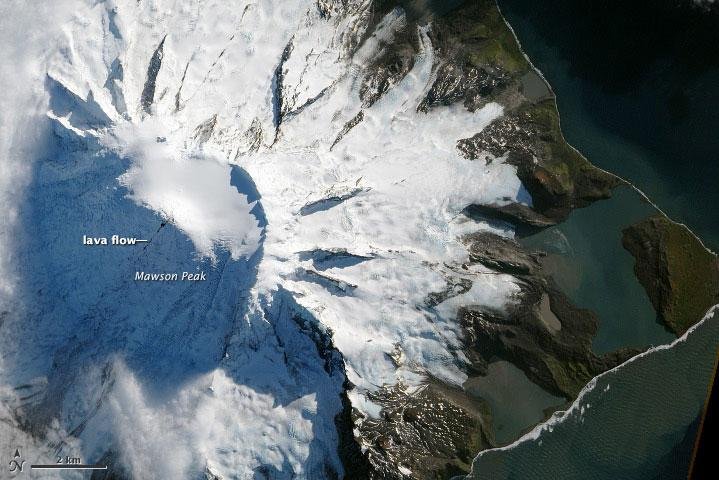An undated satellite image shows Heard Island’s Mawson Peak and a lava flow from the volcanic island that is subject to a 10% U.S. tariff. Photo by the Smithsonian Institution
April 3 (UPI) — A group of volcanic islands located near Antarctica and whose only inhabitants are colonies of penguins and seals is listed among foreign states subject to U.S. trade tariffs.
President Donald Trump declared Wednesday to be “Liberation Day” in the United States and imposed a minimum global tariff of 10% on nations around the globe.
The McDonald Islands and Heard Island are among those listed, but the islands are barren and have no people or government.
The United Kingdom controlled the islands until 1947 when they were transferred to Australia, which still maintains control.
Australia classifies the islands as external territories that are not self-governing.
The Trump administration separately listed Heard Island and the McDonald Islands from Australia with a 10% tariff imposed on any goods imported from them into the United States.
Despite being uninhabited and lacking any industry, World Bank data show $1.4 million worth of products imported into the United States from Heard Island and the McDonald Islands in 2022l listed as electrical and machinery goods.
Other imports are listed from the islands going back to 2017 and range between $15,000 and $325,000 in total value per year.
The islands have an active fishery but no buildings or inhabitants beyond wildlife.
Among their penguin colonizers are king penguins, but there are no emperor penguins, according to Scientific American.
There is no record of the king penguins declaring sovereignty over the islands.
U.S. sailor John Heard discovered Heard Island in 1853 and named it after himself with no reported resistance from its indigenous penguin and seal population.
A year later, U.S. sailor William McDonald discovered the McDonald Islands and likewise named them after himself with no objection from their indigenous penguin and seal colonies.
The islands are located in the Indian Ocean about equidistant to South Africa and Australia and about 1,000 miles north of Antarctica.
